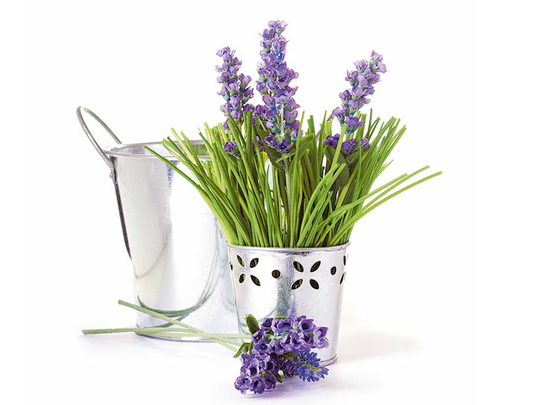
Some varieties of culinary lavender are milder than others. Feel free to add a little more or less, depending on the pungency of what you have, but always use lavender with a light hand.
Good, sweet culinary lavender with especially complex, enticing flavours among the purple varieties include Buena Vista, Folgate, Betty’s Blue, Royal Velvet and Imperial Gem. Among pale pink varieties: Melissa and Hidcote Pink.
Keep in mind that lavender bloom colour is not an indication of taste. (Some pleasant culinary varieties are light pink) But brighter-hued lavenders do lend more colour to syrups and infusions, often a pale purple-amber that turns surprising pinkish in the presence of lemon or lime juice (or other acid).
Simple uses
Lavender honey:
Heat one cup of clover honey to very hot, then stir in a tablespoon of dried or fresh lavender. Cover and let steep for several hours or until the lavender taste suits you. Reheat the honey; strain and discard the lavender. Serve the honey with toast or add to tea, fruit, mustard, marinades, meat glazes or salad dressings.
Lavender syrup:
Stir together one cup of sugar and one cup of water in a medium saucepan. Bring to a gentle boil and cook for five minutes. Remove from the heat; stir in one tablespoon of dried or fresh lavender. Let steep for one to four hours or until the desired taste is achieved. Strain the syrup; keep refrigerated. Add to tea, fruit, marinades, meat glazes and salad dressings or serve as a fruit sundae sauce.
Quick lavender lemonade or limeade:
Combine a can of frozen lemonade or limeade concentrate and water as directed to make a pitcherful. (Or buy a quart already made.) Use a fork to thoroughly mash two or three chopped fresh lavender spikes with two teaspoons of water until it is green. Strain the water through a fine-mesh sieve into the pitcher. Add several sprigs to the pitcher and garnish servings with lavender spikes (on their stems).
Lavender orange ginger oil:
Combine two teaspoons of finely chopped fresh or minced dried lavender with half cup of safflower oil, 1 teaspoon of grated orange zest and half teaspoon of peeled, minced fresh ginger root in a saucepan. Heat the mixture until almost boiling; let it stand to infuse for several hours, then strain and refrigerate. Add to stir-fries, marinades and salad dressings or combine with soy sauce for a dipping sauce.
Tips
- Check the freshness of dried lavender by taking a sniff. If it’s pleasantly fragrant, it’s fresh enough to use. If it’s musty-dusty or has little scent, pitch it and buy more.
- If you buy fresh lavender, when it starts to dry out, bunch it using a rubber band and hang it upside down until fully dry. Snip off spikes as you need them, or harvest the bunch by pulling off all the buds with your fingers. Store the buds in a jar.
- Ready fresh lavender for cooking by snipping off the spikes (bloom heads), then washing them and patting them dry. Either chop the whole spikes, or pull off and chop just the tube-shaped little buds — your choice.
- Save harvested and dried lavender stems to use as kebab skewers or to place on charcoal while grilling for a pleasing smoky-herb taste.














